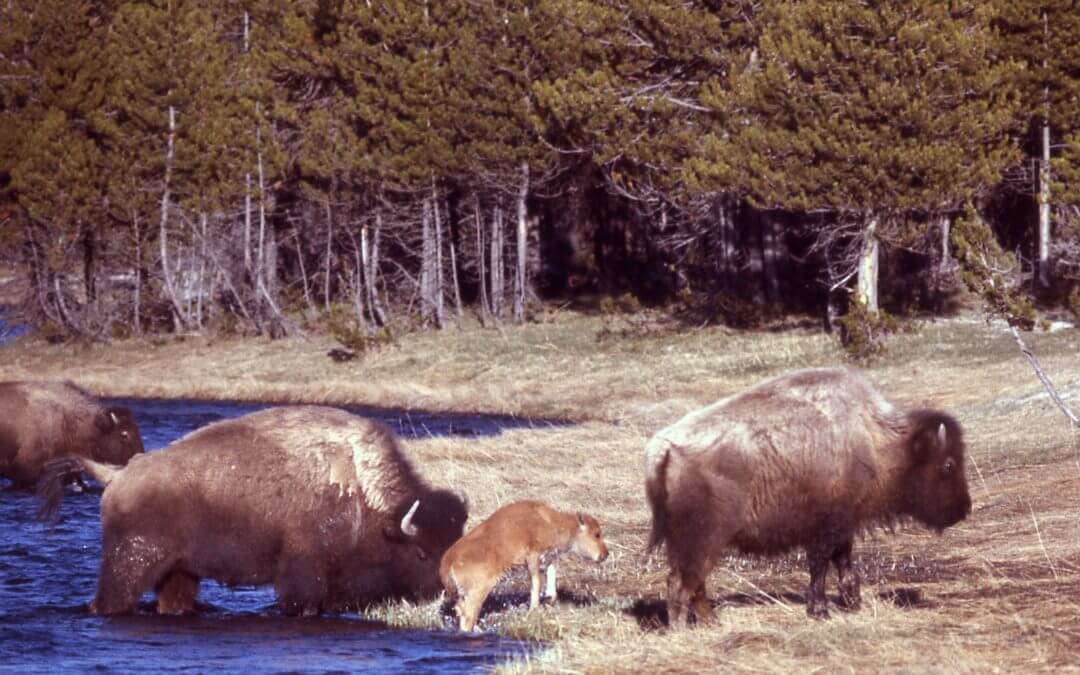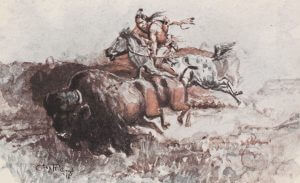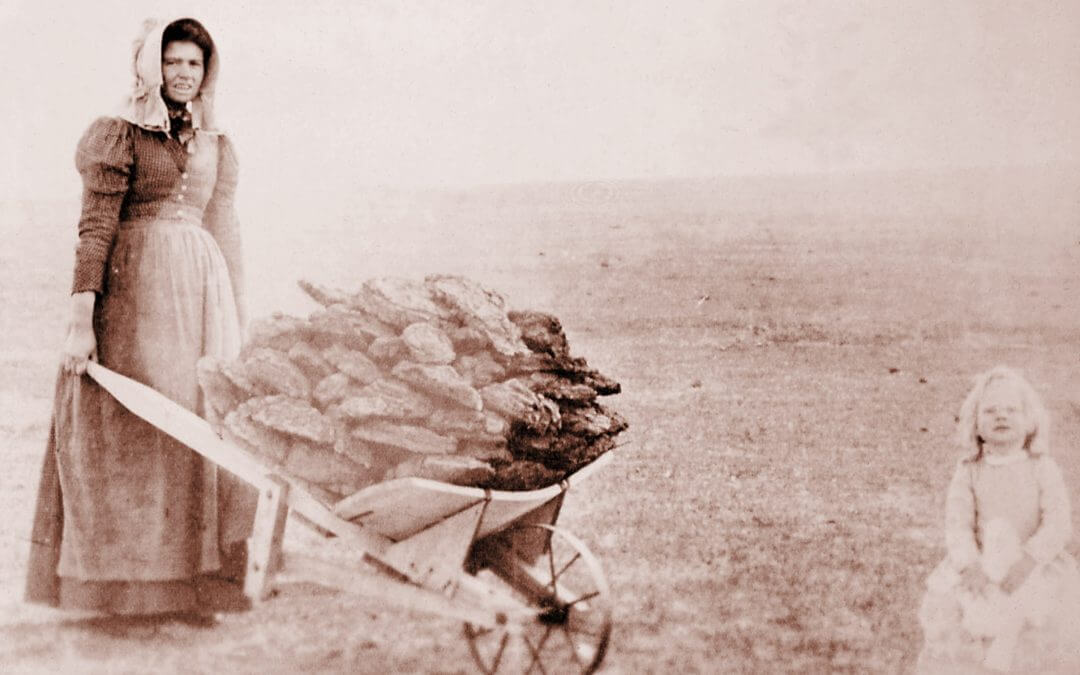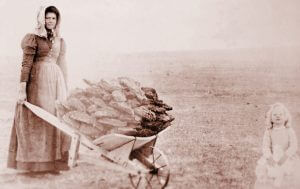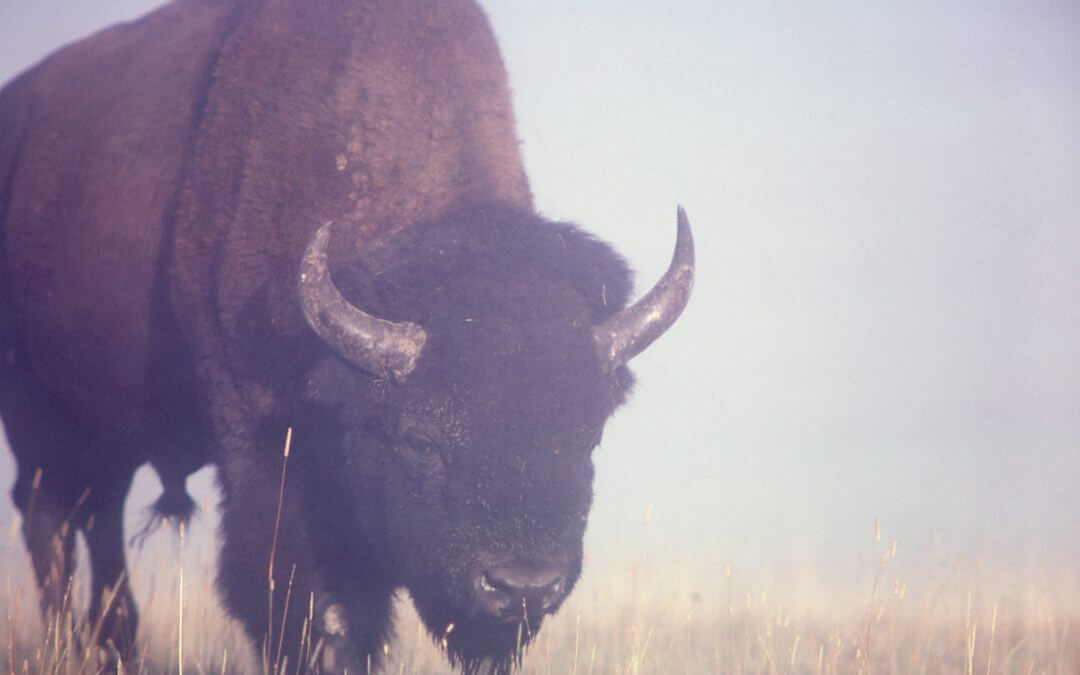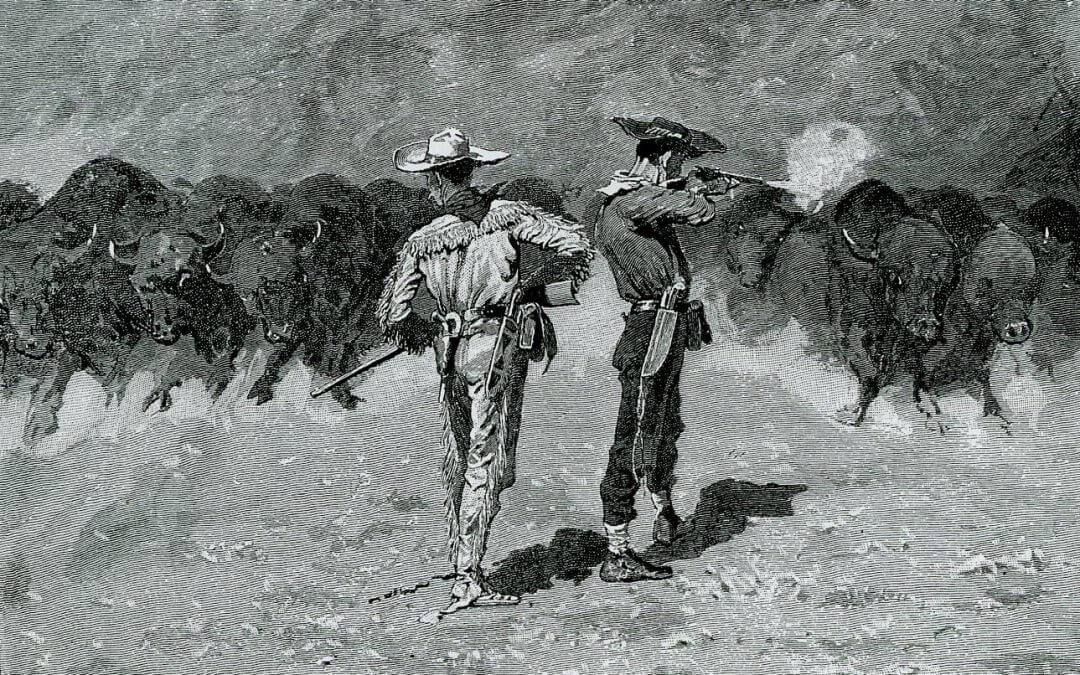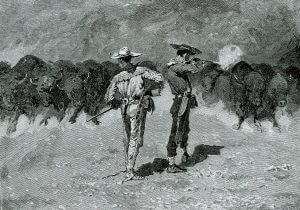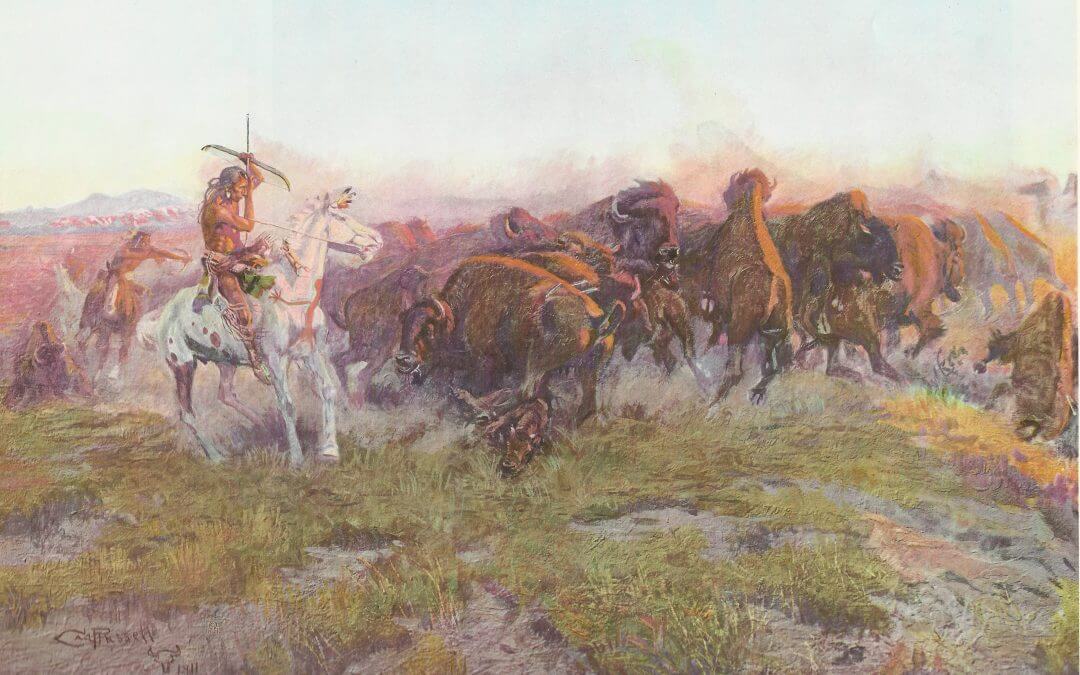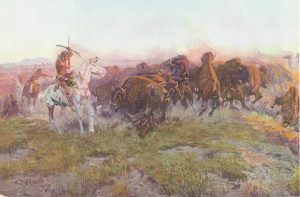Traditionally Native grandparents taught children that, “The buffalo are our brothers.”
In turn, children learned to respect the buffalo, and remember to thank them for their many gifts.
Stories were often told to strengthen the bond between buffalo and humans.
Some traditions suggest that buffalo could shift back and forth into human form, and that humans, too, could sometimes shift and become buffalo.
One day a young hunter went out alone to get meat for his people.
He was a good hunter who followed the sacred traditions, always shared meat with older people and thanked the buffalo for their gifts.
As he walked by a small stream, he saw a buffalo cow coming toward him.
He pulled an arrow from his quiver, getting ready to shoot her, when she suddenly turned into a beautiful young woman. He dropped his arrow as she came closer.
“I come from the buffalo people,” she said. “My father sent me here because of your good feelings toward all buffalo. He knows you are a good, kind man, and I was sent here to be your wife.
“We are meant to set an example for both the stand-upright people and the walk-on-all-fours people, and teach them how to live together in peace and harmony.”
Her hair smelled of sage and prairie flowers. He immediately fell in love with her, and took her home to his village.
They married and had a son named Calfboy. For a time they lived happily together in the Indian village.
But the Native women did not like the buffalo woman much.
Her hair fell in wild tangles. They said she smelled strange and didn’t understand their ways.
One day when her husband was gone hunting, they scolded her and told her to go back home.
She picked up Calfboy and ran away.
When the brave young hunter returned and found they had gone, he was frantic. He went in search, following their moccasin trail all day.
That evening he found them eating by a camp fire.
His wife told the hunter, “You must go back. I need to go home to live with my people. But they will kill you if you follow.”
“I’m not afraid to die,” he said. “I love you both and I am going with you.”
He lay down to sleep with them. But in the morning when he awoke they were gone.
Again, he followed their moccasin tracks all day. When he lost the trail, the grasshoppers told him which way to go, and he found his wife and child at evening camp.
His wife again told him, “You can’t follow me. If you do my people will be so angry about what happened, they will kill you.”
“I don’t care. I love you and I’m going to go where you go,” he said.
For three days the same thing happened. He woke up alone.
Then on the fourth morning the tracks leading away were not moccasin prints. Instead they were tracks of a buffalo and a small calf.
The father followed them and from the top of a ridge he saw a huge herd of grazing buffalo.
Calfboy came galloping up on all fours, crying, “Papa! Go back! They’re going to kill you.”
The brave hunter said, “No, son. I came to stay. I belong here with you and your mother.”
“Then you’ll have to be brave. If you show any fear my grandfather will kill you. He’s chief of all the buffalo. He’s going to test you. You’ll have to find me and Mama, in all this big herd of buffalo.
“You’ll know me because I’ll twitch my left ear like a fly is bothering me. You’ll know Mama because I’ll put a cocklebur on her back. Be careful, Papa.”
Just then a huge old buffalo charged at him, but he stood his ground and showed no fear.
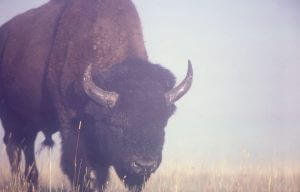
In the Calfboy tradition, his grandfather challenged and tested the brave hunter. But the father showed no fear and won the right to stay with his family. NPS.
The buffalo gathered around him in a circle. The little calves in the middle, then the yearlings, the youngest cows, and all the way out to the oldest bulls, according to age.
He survived every test they gave him that day.
Finally the old buffalo said, “If you’re such a good man, if you’re so smart, show me who your son is.”
The hunter walked around the big herd and at last saw a young buffalo with a twitch in his left ear.
“This is my son,” he said, surprising all the buffalo.
“That’s wonderful” they said. “He must be really smart.”
“Okay,” challenged the grandfather. “You think you’re so smart, stand-up-right person. Now find my daughter for me.”
Again the father walked around and around and finally spotted the cocklebur. “This is my wife,” he said, stroking her hair.
A tear fell from her eye.
The old buffalo said, “Because this man loves my daughter and my grandson so much that he’s willing to die for them, he can stay.”
“We will show you how we walk-on-all-fours people can live together with you stand- upright people in peace and harmony.”
They covered him with a buffalo hide and rolled him over and over, squeezing out his breath and rubbing off the human smell on the sagebrush.
He tried to stand upright, but could not.
Finally, he went down on all fours, and could not rise on his feet.
That day the buffalo became fast friends with humans. Because the brave young hunter loved his wife and child so much, the buffalo agreed he could stay.
They also agreed to give humans their meat, their hides and many gifts, so the stand-upright people and their children would never be hungry again.
The Native people thanked the buffalo for their generosity and made a solemn promise to treat them always with respect and gratitude.
